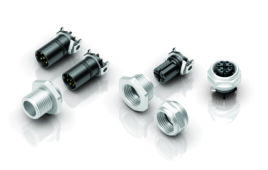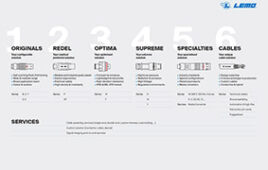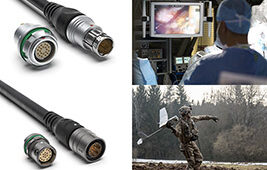Several changes in the medical and telecommunications industries, and in the military and aerospace markets will influence the design and production of connectors, fiber optic systems, and cable assemblies claims Molex, a leading supplier of interconnect devices and systems.
In the medical field, longer life expectancies, reduced patient mobility, and nursing staff shortages are some of the factors influencing changes in connecting device design. These factors are behind the increase in electronic devices that can monitor a greater variety of vital signs and medical conditions once handled by hospital staff, whether that monitoring occurs in the hospital or at a patient’s home. Wireless technology is viewed as key to the growth of devices for remote monitoring and communication, as well as for patient self-care. Such devices will assist in the treatment of illnesses or conditions such as diabetes and dialysis.
Electronics technology is not only shrinking the size of medical devices, it is also adding capability, as the medical industry increases its focus on prevention. Medical devices that measure vital signs range from sophisticated multi-parameter devices to those that measure one parameter, such as blood glucose levels. Molex, for example, has developed three-dimensional circuit boards and interconnect components that reduce the size of these devices, yet enable custom shapes. Newer diagnostic equipment has the same need for speed, power, and function as industrial devices.
Medical diagnostic equipment is also moving from the organ to the cellular level. The latest devices use sensors that incorporate MEMS technology.
Lastly, both medical equipment design and medical equipment manufacture are being outsourced, a relatively new development for this industry.
In the telecom industry, noted Molex, the need for modular devices is driving design decisions. Electronic devices increasingly need to meet weight limits of less than 70 kg to enable easier transport to remote server stations.
Video content is driving bandwidth demands. Connectors must offer high-speed as well as density in data transmission. Also, the industry is looking for common interconnect configurations, and protection against outdoor environmental elements. Sealed copper and fiber products, board-to-board connectors, flex circuit connectors, and RF antenna connections help meet these needs.
Another driver for higher bandwidth connectors is the use of dual and quad core microprocessors in computers. Notebooks, for example, need connectors that can handle voice and video data transmission. However, these multiprocessor devices use more wattage, increasing heat dissipation requirements. A power connector must deliver high density of amperage but stay out of the way of airflow for proper cooling.
The need for personal storage for data is increasing as well. It is no longer uncommon for personal computers to be attached to five or six data storage devices.
The military is looking for equipment that will handle tasks typically performed by military personnel. MIL spec parameters are still necessary in product designs, but there’s a shift to commercial off-the-shelf (COTS) components, shrinking the need for custom components.
New products and devices must be lighter weight, whether these devices are to be carried by people or cargo. Thus, you need to be aware of newer, lighter weight materials, even for connector components.
High pin count and micro-miniature components are on the rise as well to meet size reduction requirements. Fiber optics, including plastic optical fiber, and copper flex materials are helping to meet these requirements.
The defense market will not outsource the manufacture of military equipment. And the defense industry still prefers the use of tin and lead in products, even though other markets are converting to non-hazardous RoHS materials.
: Design World :
Filed Under: Connectors (electrical) • crimp technologies





Tell Us What You Think!